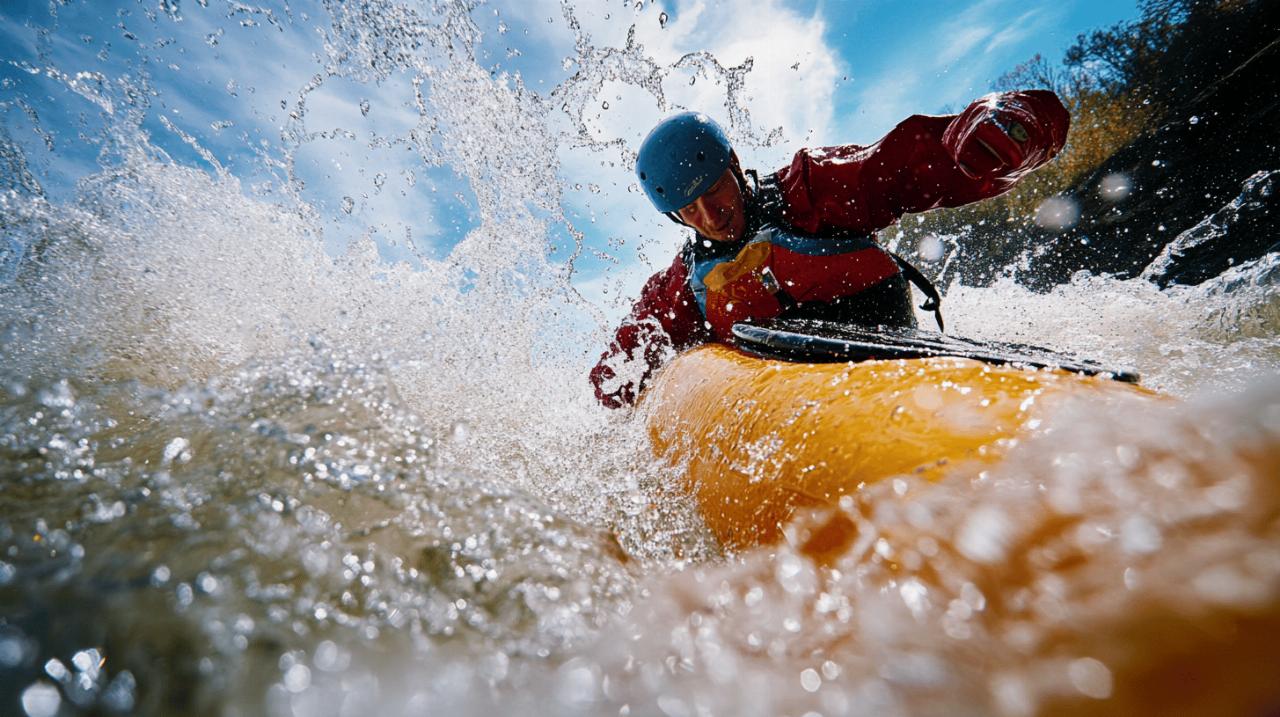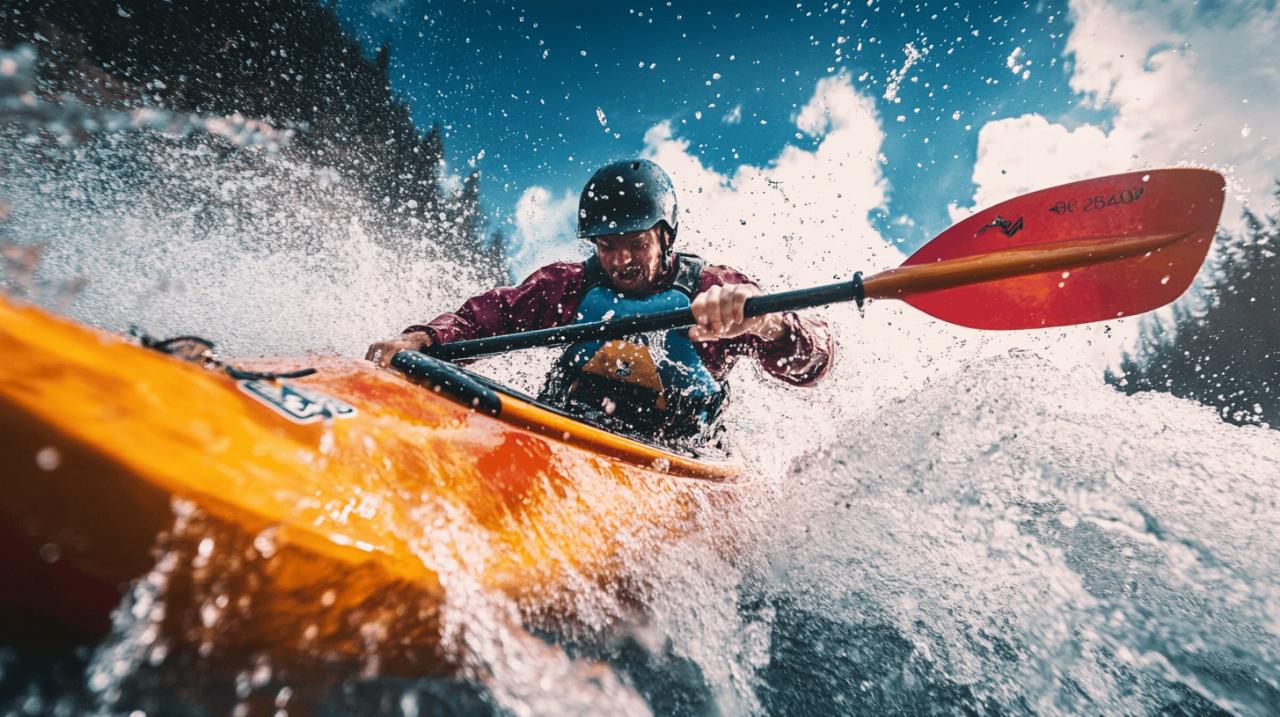When venturing out onto the water in a kayak, the prospect of capsizing might seem daunting, yet understanding the appropriate recovery methods transforms this challenge into a manageable aspect of the sport. Acquiring proficiency in handling an overturned kayak not only bolsters confidence but also ensures safety during unexpected moments on the water. Whether paddling along serene rivers or navigating coastal waters, mastering these techniques equips any kayaker with the resilience and adaptability necessary to respond effectively when circumstances take an unexpected turn.
Staying Calm and Prepared During a Capsize
Maintaining composure when your kayak tips
The immediate reaction to finding oneself upside down in the water often dictates the success of the recovery. Keeping a level head during this sudden shift proves essential, as panic can quickly escalate a manageable situation into a more serious predicament. Recognising that capsizing forms a natural part of kayaking helps paddlers approach the experience with clarity rather than fear. Taking a mental pause to assess the situation allows for a more measured response, reducing the likelihood of injury and facilitating a swifter return to upright paddling. This composure extends beyond the initial moment of capsize, guiding every subsequent action from securing equipment to executing recovery techniques with precision and control.
Securing your paddle and positioning yourself safely
Once submerged, the priority shifts to maintaining contact with essential equipment, particularly the paddle, which serves as a vital tool in almost every recovery method. Fumbling for a paddle in murky water wastes precious time and energy, so gripping it firmly from the outset proves invaluable. Positioning the body correctly within or near the kayak also matters greatly. Tucking forward towards the front deck offers protection and stability, creating a secure posture that prepares the paddler for the next steps in the recovery process. This deliberate positioning not only conserves energy but also minimises the risk of entanglement with the spray skirt or other gear. Understanding these fundamentals establishes a solid foundation upon which more advanced techniques can be built, ensuring that each movement contributes purposefully to regaining control and safety on the water.
The eskimo roll: your primary self-recovery technique
Executing a proper hip-driven roll
Among the various recovery methods available to kayakers, the eskimo roll stands out as the most efficient means of righting an overturned kayak without exiting the vessel. This technique hinges on the coordinated use of the hips, torso, and paddle to generate the momentum required to flip the kayak back upright. Initiating the roll begins with planting the paddle on the surface of the water, creating a stable platform against which the paddler can push. The real power, however, comes not from the arms but from a sharp, controlled hip flick that drives the kayak back into its upright position. This movement requires precise timing and body awareness, as relying too heavily on upper body strength often leads to incomplete rolls and wasted energy. The paddle serves as an outrigger, providing balance and leverage, while the hips do the heavy lifting, so to speak, in restoring the kayak to its proper orientation.
Building rolling skills through controlled practice
Developing proficiency in the eskimo roll demands repeated practice in a safe, controlled environment where mistakes carry no serious consequences. Calm water provides the ideal setting for honing this skill, allowing paddlers to focus on technique without the added pressure of challenging conditions. Structured training sessions, such as those offered by wilderness schools like NOLS, emphasise hands-on practice and gradual skill progression under the watchful eye of experienced instructors. These sessions typically begin with basic drills that isolate each component of the roll, enabling paddlers to understand the mechanics before integrating them into a fluid motion. Over time, consistent practice builds muscle memory, transforming the roll from a conscious effort into an instinctive response. This progression not only enhances self-rescue capabilities but also fosters a deeper connection with the kayak, as paddlers learn to anticipate and respond to the subtle shifts in balance that precede a capsize. Investing time in mastering the roll pays dividends in confidence and competence, equipping paddlers to handle unexpected situations with poise and efficiency.
Wet exit and surface recovery procedures
Releasing Your Spray Deck and Exiting the Kayak
 When rolling proves impractical or unsuccessful, the wet exit becomes the next logical step in the recovery process. This technique involves deliberately exiting the kayak while submerged, a manoeuvre that requires familiarity with the spray deck release mechanism. The spray skirt, which seals the cockpit to prevent water ingress during normal paddling, must be quickly and decisively disengaged to allow the paddler to escape. Locating the release tab or strap and giving it a firm tug typically suffices to free the skirt, though practising this action repeatedly ensures it becomes second nature even in moments of stress. Once the spray deck is clear, pushing away from the kayak and orienting towards the surface completes the exit. This process, though straightforward, benefits enormously from prior rehearsal in a pool or shallow water, where the consequences of hesitation remain minimal.
When rolling proves impractical or unsuccessful, the wet exit becomes the next logical step in the recovery process. This technique involves deliberately exiting the kayak while submerged, a manoeuvre that requires familiarity with the spray deck release mechanism. The spray skirt, which seals the cockpit to prevent water ingress during normal paddling, must be quickly and decisively disengaged to allow the paddler to escape. Locating the release tab or strap and giving it a firm tug typically suffices to free the skirt, though practising this action repeatedly ensures it becomes second nature even in moments of stress. Once the spray deck is clear, pushing away from the kayak and orienting towards the surface completes the exit. This process, though straightforward, benefits enormously from prior rehearsal in a pool or shallow water, where the consequences of hesitation remain minimal.
Surfacing safely and assessing your surroundings
Breaking the surface marks a critical transition point, as the paddler shifts from focusing on escape to evaluating the broader situation. Drawing a deep breath and taking a moment to orient oneself helps restore calm and clarity. The immediate task involves accounting for essential equipment, ensuring that both the paddle and the kayak remain within reach. In group settings, signalling for assistance through a whistle or raised hand alerts fellow paddlers to the situation, facilitating a coordinated response. Solo paddlers, meanwhile, must gauge their proximity to shore and decide whether to attempt a water-based re-entry or swim the kayak to safety. Assessing environmental factors such as water temperature, currents, and nearby hazards also informs the choice of recovery method. Cold water, in particular, accelerates the onset of fatigue and hypothermia, making swift action paramount. By maintaining awareness of these variables, paddlers can select the most appropriate recovery technique and execute it with the urgency and precision the situation demands.
Re-entry methods and water-based recovery
Paddle outrigger technique for stable re-entry
Returning to the kayak from the water presents its own set of challenges, as the vessel's inherent instability complicates attempts to climb aboard. The paddle outrigger technique addresses this issue by using the paddle as a stabilising brace, effectively creating a temporary platform that supports the paddler's weight during re-entry. This method involves positioning the paddle perpendicular to the kayak, with one blade resting on the upturned hull and the other extending out over the water. Gripping the paddle and the cockpit rim simultaneously allows the paddler to distribute weight evenly, reducing the likelihood of the kayak rolling during the climb. From this secure position, kicking the legs vigorously while pulling with the arms generates the momentum needed to haul the torso onto the rear deck. Sliding forward into the cockpit completes the re-entry, though ensuring the paddle remains in place throughout the process proves essential to maintaining stability. This technique, while requiring some upper body strength, offers a reliable method for solo recovery in open water.
Practising recovery skills in calm conditions
Regardless of the specific re-entry method chosen, regular practice in benign conditions remains the cornerstone of effective self-rescue. Calm water eliminates the unpredictable variables introduced by waves, wind, and current, allowing paddlers to focus entirely on refining their technique. Structured training sessions that simulate capsizing and recovery build familiarity with each step, reducing the cognitive load during actual emergencies. Partnering with fellow paddlers for these drills introduces an additional layer of realism, as assisted recovery techniques such as the T-rescue or scoop rescue require coordination and communication between individuals. These collaborative exercises not only enhance technical skills but also foster a sense of teamwork and mutual support, reinforcing the importance of looking out for one another on the water. Over time, repeated exposure to the sensations and challenges of capsizing desensitises paddlers to the initial shock, transforming what once felt like a crisis into a routine aspect of the sport. This shift in perspective, cultivated through diligent practice, underpins the confidence and competence that define a proficient kayaker capable of navigating a wide range of conditions with assurance and skill.

Comments are closed